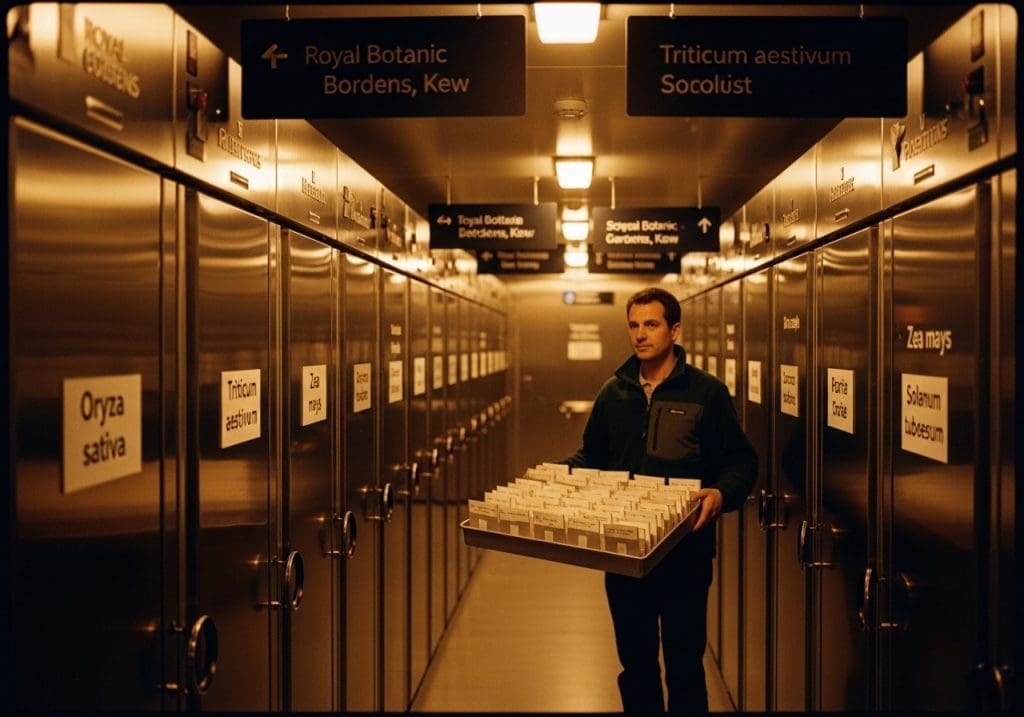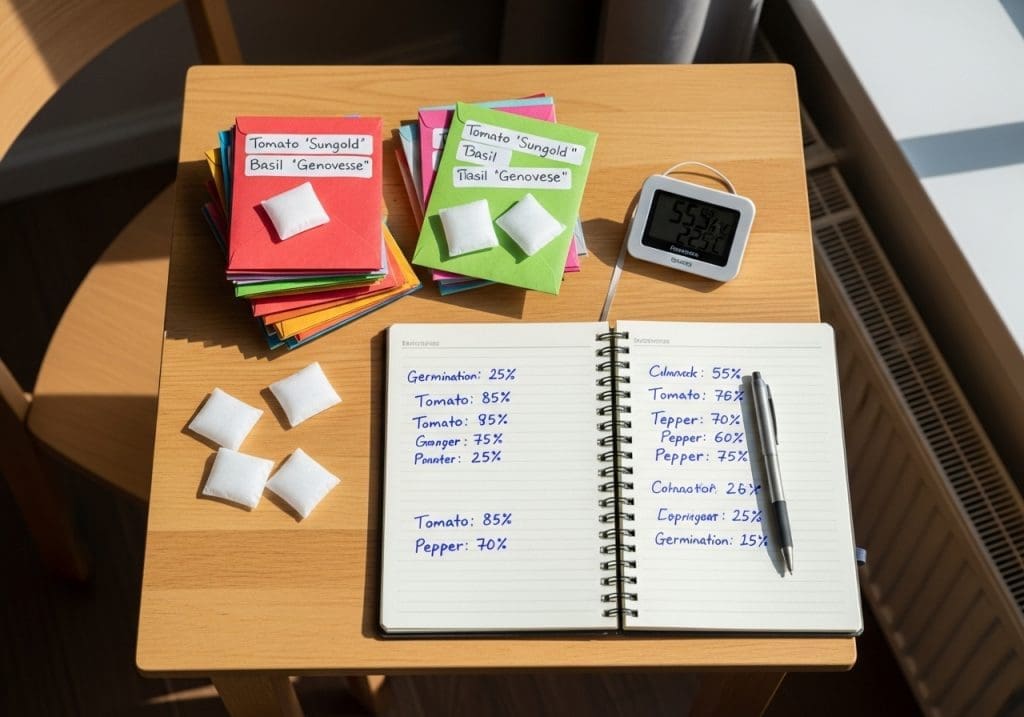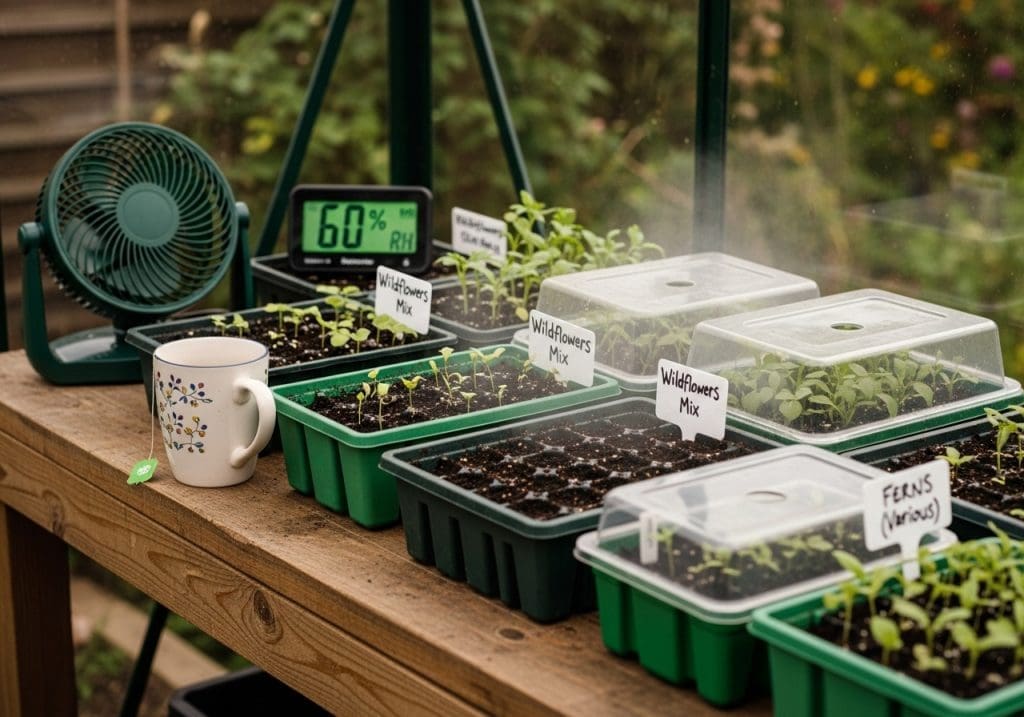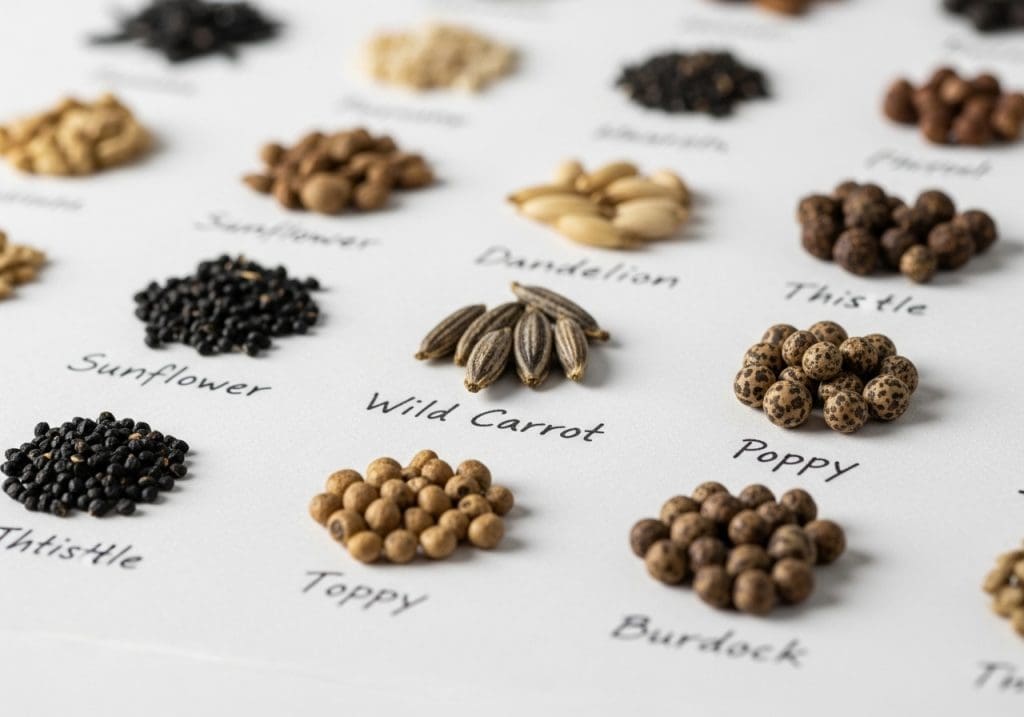If you’ve ever tucked a tiny paper packet of seeds into a drawer and felt a small thrill of security, you already understand the heart of a seed bank. The Millennium Seed Bank (MSB) takes that same instinct and scales it up—way up—into one of the world’s most important living archives. Run by the Royal Botanic Gardens, Kew, the MSB stores billions of seeds from tens of thousands of wild plant species, kept safely in sub-zero vaults so future growers, scientists, and conservationists have a lifeline when the wild world needs it most.
“Sometimes I look at my labeled seed jars and think: this is how I anchor a little hope in a small apartment.” And that’s exactly the MSB’s superpower—hope with a plan.
What exactly is the Millennium Seed Bank?
| MSB – Quick Facts | Details |
|---|---|
| Location / Operator | Wakehurst (West Sussex), run by Royal Botanic Gardens, Kew |
| Scale | 2.5+ billion seeds, 40,000+ wild species; 275+ partners in ~100 countries |
| Drying | ~15% RH at ~18 °C before long-term storage |
| Storage | Sealed containers at around −20 °C (sub-zero vaults) |
The Millennium Seed Bank (located at Kew’s Wakehurst site in West Sussex) is the largest ex situ (off-site) conservation program of wild plant seeds on Earth. Seeds arrive from global partners, are cleaned, dried to low moisture, sealed, and stored at around –20 °C. Why so cold and dry? Because low temperature + low moisture slows metabolism and aging, extending viability (the ability to germinate later). After periodic viability tests, collections are kept, regenerated, or shared for research and habitat restoration. Over 2.5 billion seeds from 40,000+ species are safeguarded, with hundreds of partnerships worldwide.
If that sounds abstract, think about your own shelf of treasured cuttings and spare seed. Now imagine multiplying it by ecosystems and continents. That’s the MSB.
A quick glossary (plain-English)
- Ex situ conservation: protecting species outside their natural habitats (like seed banks or botanic gardens).
- Viability test: a check to see what % of stored seeds can still sprout.
- Orthodox vs. recalcitrant seeds: Orthodox seeds survive drying and freezing; recalcitrant seeds don’t and need other methods (e.g., cryopreservation of embryos or living collections).
Why should a home grower care?
Because the MSB is a climate-era safety net for the plants we love—and a treasure trove of techniques we can borrow. Gardeners face the same enemies the MSB plans for: drought, pests, pathogens, supply shocks, and habitat loss that ripple through the plant trade. When wild populations crash or a region’s nurseries can’t supply clean stock, banked seed is a restart button.
Expert insight: John Dickie, Head of Seed & Lab-based Collections at Kew’s MSB, stresses that “Ex-situ conservation of plants is more critical than ever… we need to make sure we’re doing all we can to conserve the most important and threatened species.”
As a home grower, your collection might feel small—but small collections add up. The habits you build (ethical sourcing, labeling, basic seed care) echo the MSB’s principles and make your collection more resilient.

How seed banking works (and what gardeners can copy)
1) Collecting: clean, traceable, and representative
MSB teams and partners collect seed legally and ethically, following protocols to capture genetic diversity (not just the prettiest fruits). Accessions are documented with location, date, mother plant notes, and handling. At home, mirror this by labeling your seed with date and source; note the parent plant’s health and any cross-pollination risks. It makes future germination results meaningful.
2) Drying: the quiet lifesaver
Seeds are dried with controlled humidity (often ~15% RH) before cold storage. For your spare seed, a lidded jar plus silica gel packets is a budget version. Aim to keep packets dry, cool, and in the dark. Add a cheap humidity card; swap silica when the card creeps above ~30–40% RH.
For long-term banking, seeds are typically dried toward ~15% equilibrium RH at ~15–18 °C before freezing; this slows ageing and helps seeds tolerate −20 °C storage. For home use, a sealed jar + silica gel can mimic the low-humidity step—just replace desiccant when a humidity card creeps above ~30–40% RH.
3) Storage: cold, stable, organized
The MSB stores at around –20 °C in sealed containers. You don’t need lab freezers, but you can use the “cool, dark, dry” rule. A pantry box with silica or the crisper drawer in a dedicated sealed container helps—especially for short-to-medium storage of orthodox seeds.
Rule of thumb: dry first, then cold—sealed, moisture-impermeable containers at freezer temperatures (home freezers are fine for short-to-medium terms once seeds are properly dried).
4) Testing: data beats guesswork
| Date | Species | Storage (place/temp) | Sample (#) | Sprouted | Viability % | Notes |
|---|---|---|---|---|---|---|
| 2025-12-15 | Begonia sp. | Jar + silica / pantry | 10 | 7 | 70% | Resow in spring |
Test a small sample yearly; if % drops below ~50%, plan refresh (new seed or regeneration).
Seed lots are tested periodically to check germination rate. Do the same at home: each winter, sprout 10 seeds on moist paper in a labeled bag at the species’ preferred temperature. If only 3/10 sprout, your lot is at 30% viability—use it soon or re-collect.

5) When seeds don’t bank well
Some species bear recalcitrant seeds that hate drying or freezing (many tropical trees, some orchids). For these, MSB scientists use alternatives—cryopreservation of embryos, tissue culture, or maintaining living collections. Gardeners can adapt: keep such seeds fresh, sow immediately, and rely on cuttings or divisions for backup plants.
These ‘exceptional’ or recalcitrant cases often require cryopreservation or maintaining living collections rather than classic dry-cold storage.
From vault to windowsill: practical benefits for everyday growers
Insurance against supply shocks
Remember when certain hoyas or aroids disappeared overnight from shops? If a species is conserved in a seed bank, it can be reintroduced to cultivation after disease outbreaks or trade disruptions. That doesn’t mean seed banks act like shops—but their existence keeps the option open for science-led reintroduction.
Cleaner starts, fewer pests
Seed-raised plants often arrive with fewer hitchhikers than cuttings. If you’ve battled fungus gnats or spider mites, you know the relief of clean starts. (If gnats visit anyway, here’s a proven plan to stop them: Fungus Gnats in Ferns: Proven Control Methods.)
Climate-smart choices
As weather swings get harsher, choosing species by climate fit matters. The MSB’s global collections help researchers understand which populations handle drought or cold better—knowledge that eventually trickles down to home growers selecting robust seed lines.
“On stormy days I find myself reading seed labels like tiny biographies—where they came from, what they survived.” It’s a small ritual that keeps me connected to the bigger conservation story.
What the numbers tell us (and why they’re inspiring)
- Scale: The MSB holds over 2.5 billion seeds from more than 40,000 wild species—built with the help of 275+ partners across nearly 100 countries. That’s conservation at a planetary scale, running for 25 years and counting.
- Momentum: Kew highlights continuous growth of the collections and partnerships; you can explore their public overview to see current milestones and exhibitions at Wakehurst.
If you like to dig deeper into the science, Kew’s public pages are a goldmine with approachable explainers and updates—perfect for gardeners who want more than a quick headline. (Start here: Kew’s Millennium Seed Bank.)

Borrowing MSB principles for your home collection
1) Build your mini-protocols
- Label everything (species, date, source).
- Dry orthodox seeds before storage (silica + sealed container).
- Test small samples yearly for germination % and write it down.
- Refresh: if viability drops below 50%, plan a new sowing or trade for fresher seed.
One tidy checklist beats ten half-remembered tips.
2) Grow for resilience, not just rarity
Collect backups of your favorites via seed or division so a single pest incident doesn’t reset your collection. If you’re dividing ferns, use sterile tools and consistent aftercare; this step-by-step helps: How to Propagate Ferns—Division Made Simple.
3) Control the environment the smart way
Healthy seedlings hate extremes. Keep humidity stable and airflow gentle. If you need quiet gear that won’t dry seedlings to crisps, see this guide: Quiet Humidifiers & Hygrometers for Bedroom Plant Lovers.
4) Ethical sourcing (the MSB way)
Avoid wild-collected plants unless you know they’re legally and sustainably sourced (CITES-regulated taxa require permits). Look for tissue-cultured or nursery-propagated stock. The MSB’s network exists precisely to reduce pressure on wild populations.

Common gardener questions (and MSB-aligned answers)
Does freezing hurt seeds?
For orthodox seeds, no—once they’re properly dried, freezing slows deterioration. The key is dry first, then cold to avoid ice damage. Always dry first, then chill/freezer; otherwise ice formation can damage seed tissues.
What about orchids and other “tricky” seeds?
Many orchids have dust-like, low-nutrition seeds that don’t behave like beans or peas. They may require sterile sowing with specific fungi or lab media. For conservation, scientists sometimes store embryos or maintain living collections instead of classic dry-cold storage.
How long will my seed last at home?
It depends—species, initial quality, and storage conditions. A good rule: if a cool, dry, dark container keeps seeds at stable conditions, expect years for many orthodox species. Test a small sample annually and note the percentage; use the data to decide when to resow.
Can gardeners visit or learn more?
Yes—Kew shares approachable explainers and hosts exhibits at Wakehurst where the MSB is based. Their overview page is an excellent entry point for curious growers.

A gardener’s takeaway: seed as a promise
The MSB proves that tiny things add up—packet by packet, species by species, climate by climate. As home growers, we can adopt the same mindset: label well, save wisely, grow ethically, and share knowledge. Those habits make our windowsills sturdier and our plant community stronger.
If you’ve ever wondered, “Could my small efforts really matter?”—the MSB quietly answers yes, every day, from a cool, humming vault under Sussex soil.
Change log: Aug 2025 — Added MSB quick-facts table; home drying/storage notes with sources; viability log table; clarified exceptional seeds & cryopreservation.

RarePlantCare Editorial Team produces expert content on rare plants.
Our articles are AI-assisted and human-edited before publication.
We aim to provide practical, evidence-based guides for plant lovers worldwide.
Learn more about our Editorial Policy


